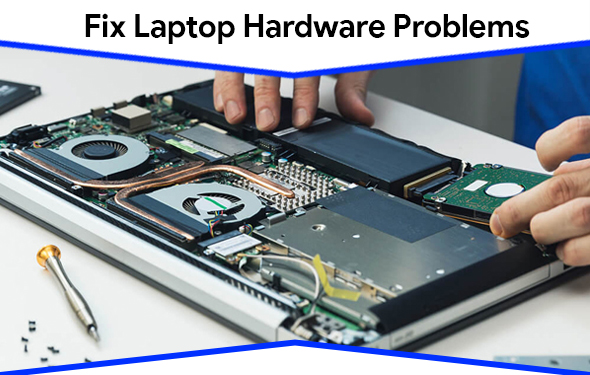Addressing Hardware Malfunctions in Laptops: A Comprehensive Guide

In the modern era, laptops have become indispensable tools for work, education, and entertainment. However, like any electronic device, laptops are susceptible to hardware malfunctions that can disrupt productivity and cause frustration for users. From issues with the display to problems with the keyboard or battery, hardware malfunctions can manifest in various forms and require careful diagnosis and troubleshooting to resolve effectively. In this comprehensive guide, we will explore common hardware malfunctions in laptops, their potential causes, and practical solutions to address them.
1. Display Issues:
Problem: The screen flickers, displays artifacts, or remains blank.
Potential Causes: Loose cable connections, faulty graphics card, or damaged display panel.
Solution:
- Check the cable connections between the display panel and the motherboard. Reconnect any loose cables securely.
- Update the graphics card drivers to the latest version.
- If the issue persists, connect an external monitor to determine if the problem lies with the laptop’s display panel. If the external monitor displays properly, the laptop’s display panel may need to be replaced.
2. Keyboard Malfunctions:
Problem: Certain keys do not respond, or the keyboard types incorrect characters.
Potential Causes: Dust or debris lodged beneath the keys, damaged keyboard circuitry, or faulty keyboard drivers.
Solution:
- Use compressed air to clean the keyboard and remove any dust or debris trapped beneath the keys.
- Restart the laptop and enter the BIOS setup menu to test the keyboard functionality. If the issue persists in the BIOS menu, it may indicate a hardware problem requiring keyboard replacement.
- Update the keyboard drivers through the Device Manager in the Windows operating system.
3. Battery Drainage:
Problem: The laptop battery drains quickly or fails to hold a charge.
Potential Causes: Battery age, software processes draining excessive power, or a faulty battery.
Solution:
- Check the battery health using diagnostic tools provided by the laptop manufacturer or third-party software.
- Close unnecessary background processes and applications that may be consuming excessive power.
- Calibrate the battery by fully charging it, then discharging it completely before recharging it to full capacity.
- If the battery health is significantly degraded or the issue persists, consider replacing the battery with a new one.
4. Overheating:
Problem: The laptop overheats, leading to system instability or automatic shutdowns.
Potential Causes: Dust accumulation in the cooling system, malfunctioning cooling fan, or inadequate ventilation.
Solution:
- Use compressed air to clean the cooling vents and fan to remove dust and debris obstructing airflow.
- Place the laptop on a flat, hard surface to ensure adequate airflow and prevent obstruction of the cooling vents.
- Adjust the laptop’s power settings to optimize performance while minimizing heat generation.
- Consider using a laptop cooling pad to improve airflow and dissipate heat more effectively.
5. Connectivity Issues:
Problem: The laptop fails to connect to Wi-Fi networks, Bluetooth devices, or external peripherals.
Potential Causes: Outdated drivers, software conflicts, or hardware failures.
Solution:
- Update the network adapter drivers and firmware to the latest version.
- Disable and re-enable the network adapter in the Device Manager to reset the connection.
- Restart the laptop and try connecting to the Wi-Fi network or Bluetooth device again.
- If the issue persists, perform a system restore to revert the laptop to a previous state before the problem occurred.
Conclusion:
Hardware malfunctions in laptops can disrupt productivity and pose challenges for users. However, by understanding common issues and employing practical solutions, many hardware problems can be diagnosed and resolved effectively. Whether troubleshooting display issues, keyboard malfunctions, battery drainage, overheating, or connectivity problems, users can follow the steps outlined in this guide to address hardware malfunctions and restore their laptops to optimal performance. Additionally, regular maintenance, such as cleaning the laptop’s cooling system and updating drivers, can help prevent hardware issues and prolong the lifespan of the device. By staying proactive and informed, users can minimize the impact of hardware malfunctions and enjoy a seamless computing experience with their laptops.







